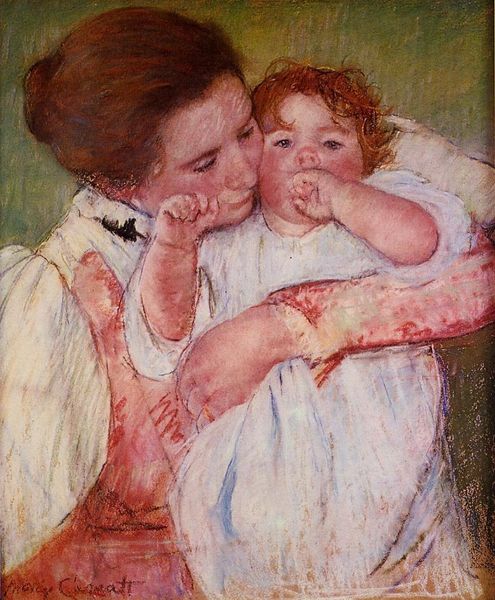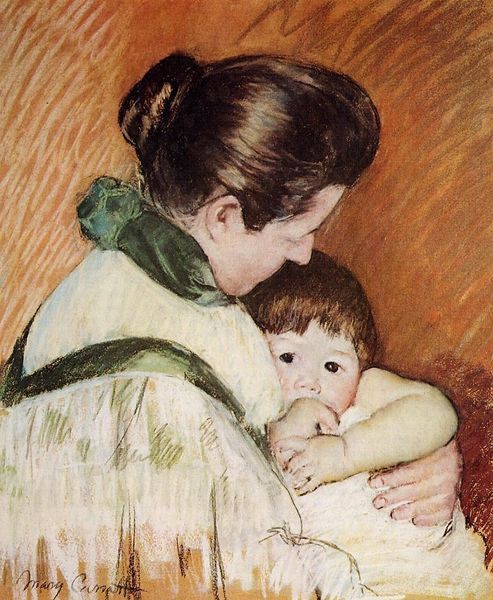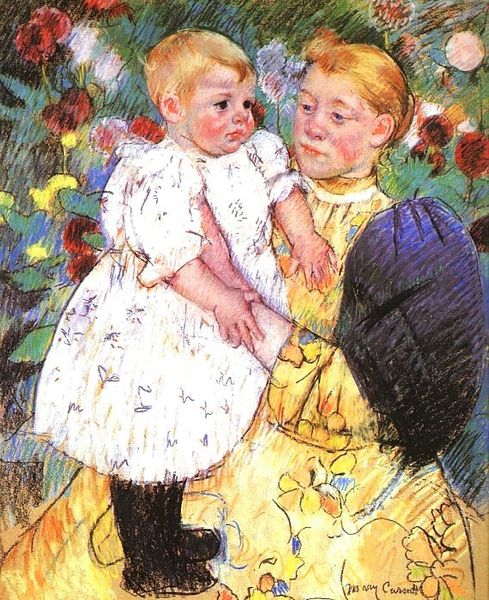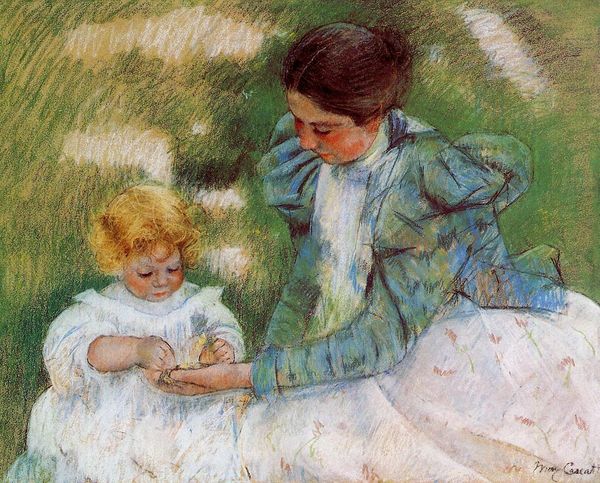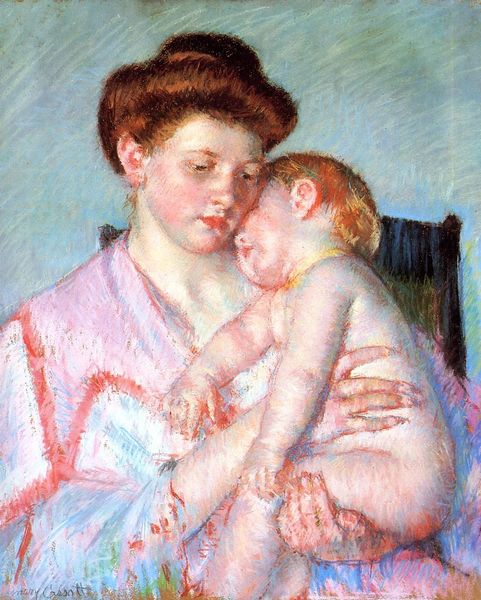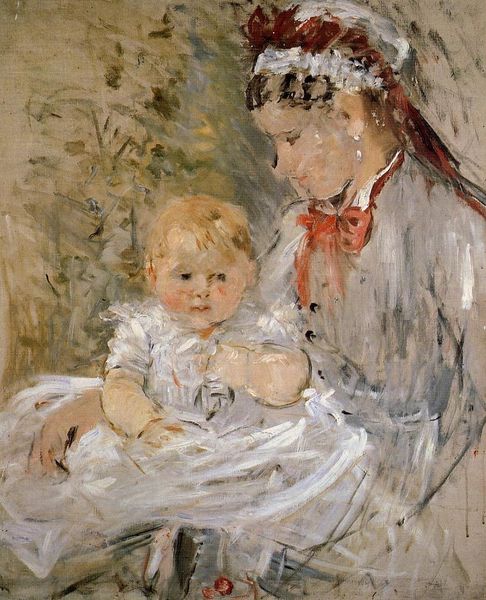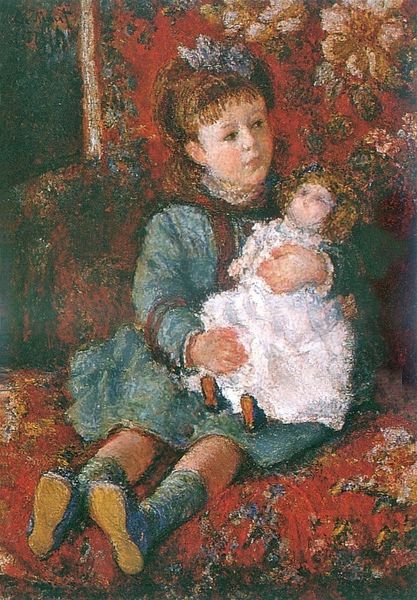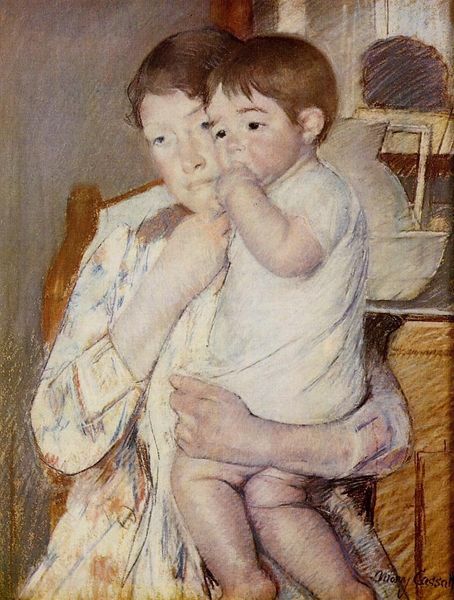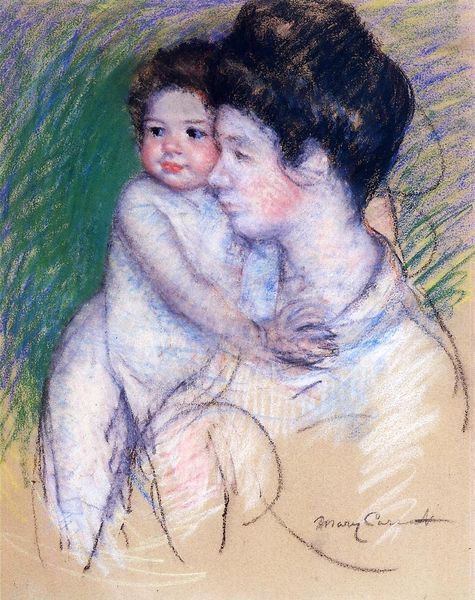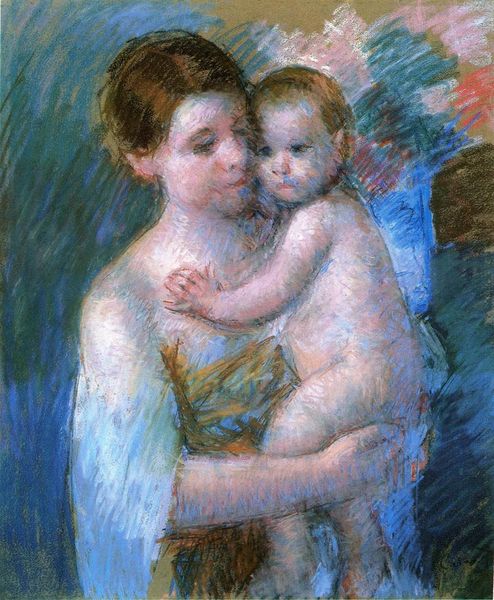
painting, oil-paint
#
portrait
#
painting
#
impressionism
#
oil-paint
#
figuration
#
oil painting
Copyright: Public domain
Editor: Here we have Mary Cassatt's oil painting, "Susan Comforting the Baby (no.1)," created in 1881. I'm really drawn to the intimacy captured, almost a fleeting moment of tenderness. How do you interpret this work through its form and materiality? Curator: Note how Cassatt manipulates light and shadow, building form and depth? The loose brushstrokes, especially in the background, are integral to the painting’s aesthetic. Consider also the composition: the close proximity of the two figures emphasizes their bond. The flattening effect of Impressionism also lends an almost timeless quality. Does this observation affect your sense of the moment that Cassatt depicted? Editor: It does! The intimacy feels heightened. The slightly blurred edges really bring a sensory focus to the moment between the two figures, while creating a dreamy aura around it, as if recalling something fleeting or a faint memory. Do you see a kind of message being conveyed in its materiality? Curator: Absolutely. Oil paint, with its ability to create both texture and luminosity, enables Cassatt to render skin tones with remarkable nuance. The way she layers brushstrokes adds a palpable sense of volume and weight to the figures. Notice also the color choices: how do the blues and whites of the baby’s dress play against the warmer tones of the skin and hair? The use of such contrasting values accentuates their tactile differences. Editor: Now that you mention it, that contrast draws my eyes, but then returns to the harmony, so delicate in the portrayal. Thank you! It's made me think about how Cassatt's choices about the formal properties amplify that initial emotional impact, as you described it. Curator: Indeed, a painting speaks, but its voice becomes clearer with the right tools of engagement!
Comments
No comments
Be the first to comment and join the conversation on the ultimate creative platform.

